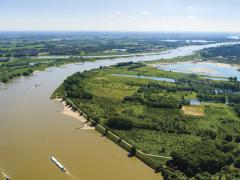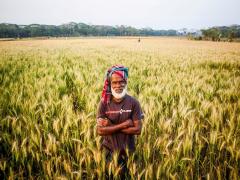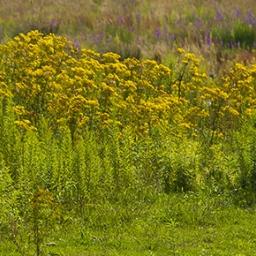Interim evaluation of the Dutch crop protection policy
Crop protection methods in the Netherlands have become more sustainable since 1998 as a result of efforts made by growers. However, at the moment the environmental quality of surface waters does not meet the statutory standards. Without measures directly aimed at tackling the substances of greatest concern and the sources of pollution arising from crop protection, the desired water quality will not be achieved by 2010 throughout the whole country.
Crop protection methods have become more sustainable
The Dutch plant protection policy aims at reaching sustainable agriculture in the Netherlands in 2010. For 2005 the following goals were set: a reduction of 75% of the environmental impact on surface water, a reduction of 50% of bottle-necks in the production of drinking water from surface water and a reduction of 50% in exceedances of the maximum residue limits (MRL) in agricultural products. The reference periods for the three goals were respectively 1998, 1998 and 2003. The calculated environmental impact as a result of drift emissions to surface water was reduced with 86%. Drift reduction measures, imposed since 2000, contributed most (75%) to this calculated reduction.
The second most important contribution came from the use of less toxic plant protection products. Concentrations of plant protection product residues measured in surface waters declined over the study period, but still concentrations above maximum permissible levels occurred in 2004. The number of bottle-necks in the production of drinking water from surface water was diminished from 33 to 27; the mid term goal was not met. Partly this was due to non-agricultural use of plant protection products and foreign sources. The number of exceedances of MRLs in Dutch agricultural products declined from 3.5% to 2.5%. The study period, however, was too short to establish a significant trend. Harmonisation of MRLs across the EU led to fewer exceedances of MRLs in products from other European countries. There is no indication that Dutch agriculture has become less competitive due to the plant protection policy. However, detailed economical data from neighbouring countries to underpin this statement are missing.
Authors
Specifications
- Publication title
- Interim evaluation of the Dutch crop protection policy
- Publication date
- 11 September 2007
- Publication type
- Publication
- Magazine
- XIII Symposium Pesticide Chemistry - Environmental Fate and Ecological Effects, p. 908-916. La Goliardica Pavese s.r.l., Pavia, Italy. ISBN 978-88-7830-473-4.
- Product number
- 92077




